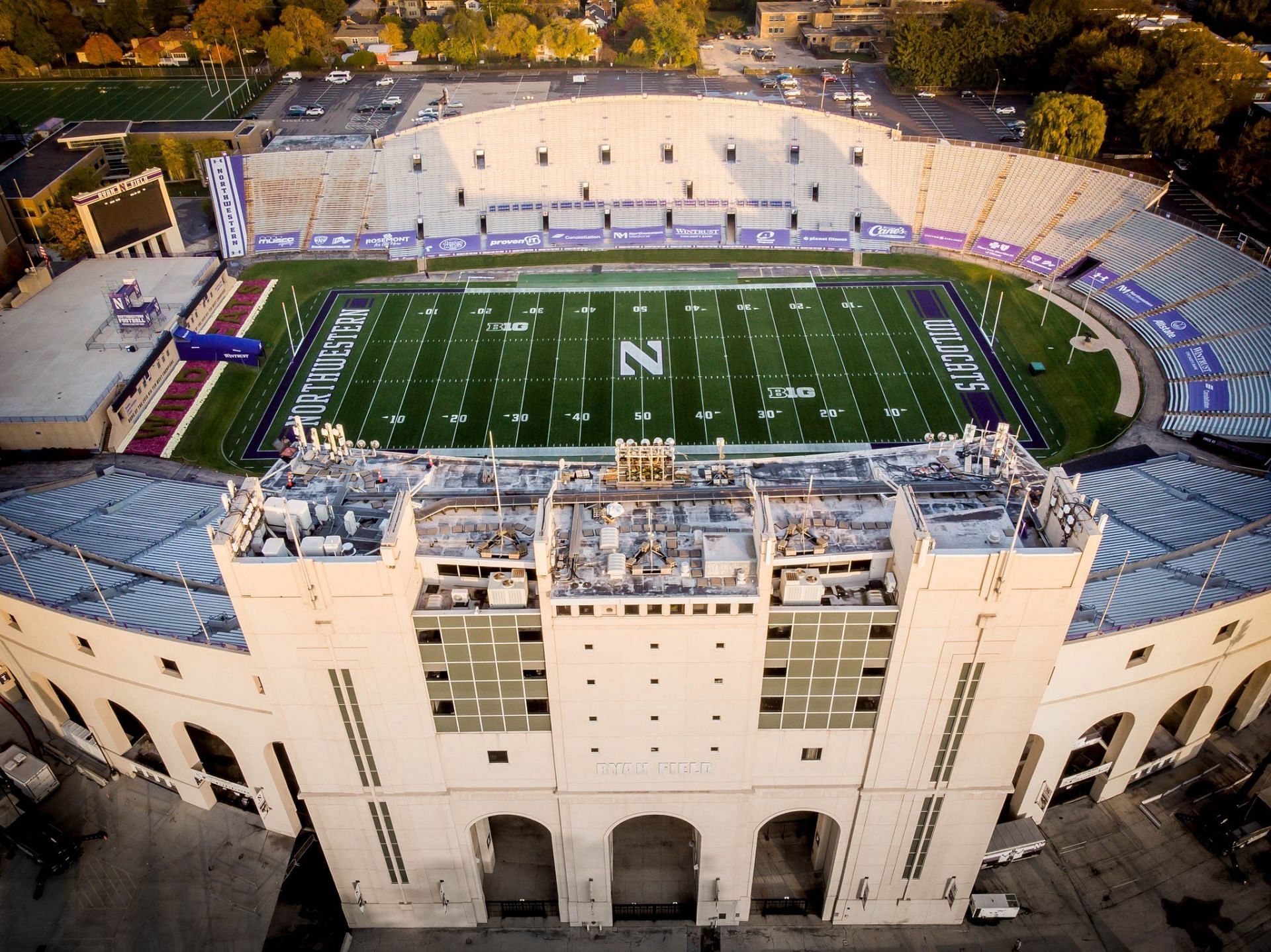
In Photos: Northwestern breaks ground on new $800M football stadium as demolition begins at Ryan Field
Ryan Field, the home of the Northwestern Wildcats, is being demolished to construct a new state-of-the-art stadium.
The stadium, built in 1926, was the only stadium in college football without any permanent lighting and had a capacity of 47,130.
It is set to be replaced by a multi-use stadium that will cost $800 million and will be completed in time for the 2026 season.
Why is the new stadium controversial with residents?
This plan is controversial with local residents, who are fighting against the multi-use purpose of the new stadium.
It is proposed that, in addition to football, the new stadium would host six maximum-capacity concerts, which residents think will increase traffic and noise pollution as well as have an impact on the surrounding residents' general way of life.
However, Northwestern University VP Luke Figora told the Chicago Tribune that Northwestern realizes that they need to replace Ryan Field with something that reflects the current landscape of college football.
“It doesn't have a lot of the amenities that that venues across the country have, frankly, for college football, so we know it needs something,” he said.
Currently, the location where the Northwestern Wildcats will be playing their home games until their new stadium is built is unknown.
The History of Ryan Field and Northwestern
Ryan Field was originally known as Dyche Field before being renamed in 1997. When it opened, it was described as one of the finest stadiums in college football and had been home to the Wildcats since 1926.
The Northwestern program that called home to Ryan Field has never won a national championship and has an overall losing record (556-702-44)
Ryan Field has been home to some historic moments in Northwestern's history, including their 2000 clash with the Michigan Wolverines. Northwestern scored the winning touchdown with 20 seconds left in the game to give them a 54-51 victory in what was described as one of the “most important games in the history of college football.”
But with success also come defeats. In 2006, the Wildcats lost to the Michigan State Spartans in what was the biggest comeback in the history of college football, with the Wildcats giving up a 35-point lead in the third quarter to lose 41-38.